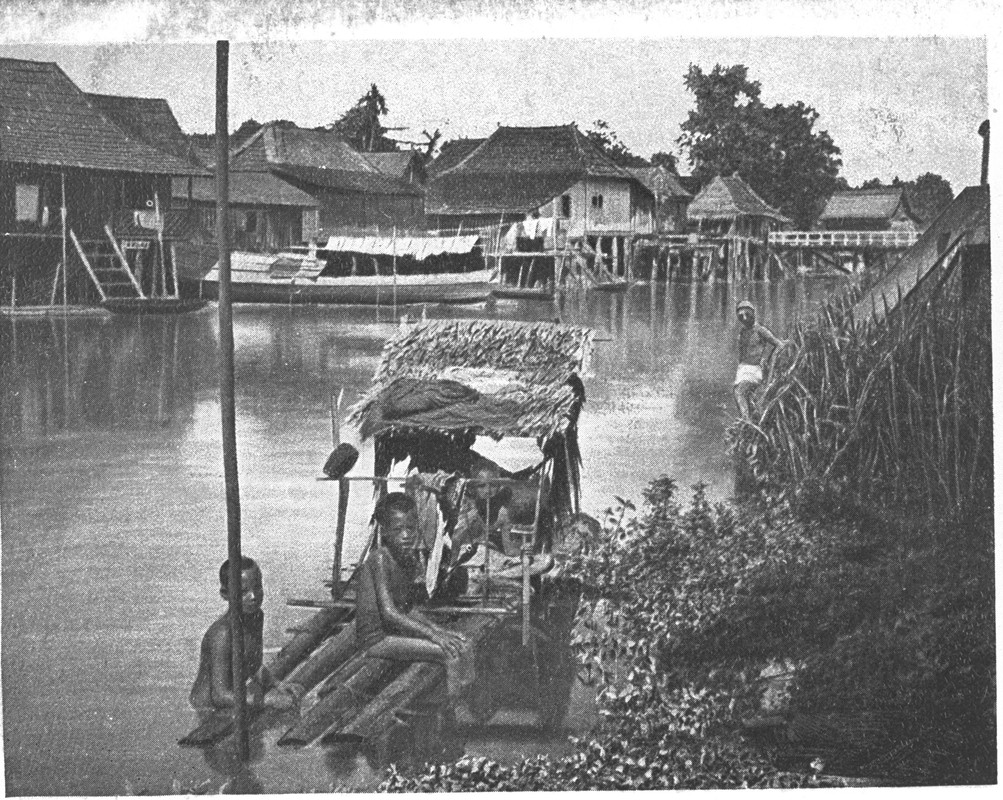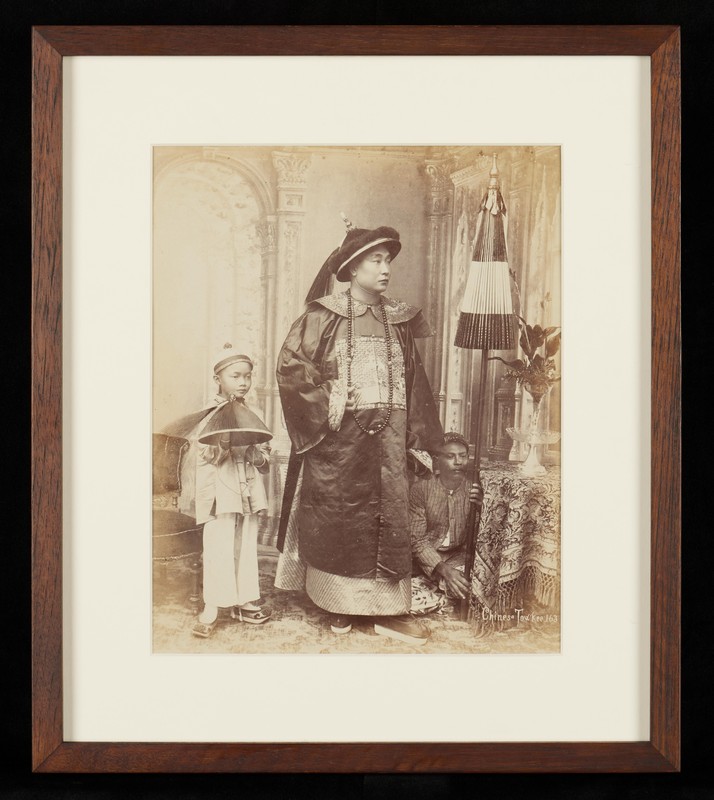Fuk Tak Chi temple: The temple established by the Cantonese and Hakkas
In the early 19th century, the Cantonese and Hakka communities in Singapore jointly established Fuk Tak Chi temple (also known as Hok Tek Chi).1 Dedicated to the worship of the Chinese earth deity Tua Pek Kong, the temple oversaw the construction of two cemeteries, Cheng San Teng and Loke Yah Teng.
The temple (later renamed as Hok Tek Chi Loke Yah Teng Association) has been standing on Telok Ayer Street since at least 1824. This is evidenced by a temple plaque from the fourth year of the Daoguang Emperor’s reign (1824) bearing the inscription Zepi haidao (“benefitting the island”). The plaque is the earliest known artefact of the Chinese community in Singapore.
Origins in Tua Pek Kong shrine
As Tao Gongzhu (birth and death years unknown) detailed in “Fudeci lüyeting yangeshi” (The Historical Evolution of Fuk Tak Chi and Loke Yah Teng)2, Tua Pek Kong was already enshrined by the sea during the Jiaqing era (1796–1820), before the cemetery Cheng San Teng had been established. The shrine was located at the site on Guan Soon Street (the colloquial name of Telok Ayer Street), where Fuk Tak Chi temple now sits. The shrine, which was modest in size, was said to have been the burial site of an elder whose body had been washed ashore onto Telok Ayer Street — then along Singapore’s original coastline. People raised funds to give him a proper burial on the site where he was found.


As the reputation of the site grew, three immigrant communities pooled funds to construct a temple, which they named Fuk Tak Chi. They comprised the Kwong Wai Siew community (Guangzhou, Huizhou, and Zhaoqing), the Fong Yun Thai community (Fengshun, Dabu, and Yongding), and Kar Yeng Five Districts (Meixian, Jiaoling, Pingyuan, Wuhua, and Xingning). The temple was also known as “Fuk Tak Chi by the sea”, due to its proximity to the waters, as well as “Fuk Tak Chi on Telok Ayer Street”. It was a place where the Cantonese and Hakka communities forged their alliance and provided assistance to their clansmen.
According to surviving records inscribed on monuments erected separately by worshippers from the Kwong Wai Siew and Fong Yun Thai communities, Fuk Tak Chi temple underwent several renovations and expansions in 1854, 1862, and 1869. An inscription from 1870 also noted that the Cantonese and Hakka communities had built a walled platform in front of the sea-facing temple to stage performances as offerings to the deities, which boosted its popularity.
Despite the alliance between the Cantonese and Hakkas, disputes over money could not be avoided. After all, the two communities originated from different regions in China and belonged to different dialect groups. A record of the legal dispute between Fuk Tak Chi’s pair of temple keepers in the 12th year of the Guangxu Emperor’s reign (1886) stated that a conflict over the uneven distribution of temple funds caused sufficient alarm to warrant the involvement of the colonial government’s Inspector-General and the Protector of the Chinese in filing and bringing the case to trial. After the trial, on 2 January 1887, representatives from both parties were ordered to sign a contract. The terms stipulated that the two communities would take turns in appointing a temple keeper, and whoever was in charge for the year was to be responsible for all profits or losses to ensure impartiality and prevent further conflicts. From then on, Fuk Tak Chi temple and Loke Yah Teng were managed in this manner,3 and the rotational model remains in use at Hok Tek Chi Loke Yah Teng Association today.
Official closure in 1994
In 1985, Fuk Tak Chi temple was requisitioned by the government. It was officially closed in 1994, and the government sold the land — including the building — for commercial development. As the temple had housed a large number of deities, the Cantonese and Hakka communities invited Taoist priests to perform the necessary rituals for the permanent removal of all the statues. Only the statues of Tua Pek Kong and Cheng Huang Ye (the City God) were relocated to the premises of the Hok Tek Chi Loke Yah Teng Association in Geylang.
Fuk Tak Chi’s building and the land on which it sits now belong to Far East Organization. The property was renovated and converted into Fuk Tak Chi Museum in 1998, and has remained on the original site as a conservation project under the National Heritage Board.

This is an edited and translated version of 广客帮合办大伯公庙:海唇福德祠. Click here to read original piece.
| 1 | Tua Pek Kong is also known in Chinese as Fu De Zheng Shen, the deity of wealth and merit. Tua Pek Kong temples were thus also called Fu De Ci (pronounced in dialect as Fuk Tak Chi), halls of wealth and merit. |
| 2 | In Fudeci lüyeting yan‘geshi jinian tekan [Commemorative Issue of the Historical Development of Hok Tek Chi Loke Yah Teng Association] (1963). |
| 3 | As Cheng San Teng was no longer in use by 1860, the temple was jointly managed by Fuk Tak Chi temple and Loke Yah Teng. |
Chen, Ching-ho and Tan, Yeok Seong, eds. Xinjiapo huawen beiming jilu [A Collection of Chinese inscriptions in Singapore]. Hong Kong: The Chinese University of Hong Kong Press, 1972. | |
Dean, Kenneth and Hue, Guan Thye, eds. Chinese Epigraphy in Singapore 1819–1911. 2 Vols. Singapore & Guangxi: National University of Singapore Press and Guangxi Normal University Press, 2017. | |
Hok Tek Chi Loke Yah Teng Association editorial team. Fudeci lüyeting yan’geshi jinian tekan [Commemorative Issue of the Historical Development of Hok Tek Chi Loke Yah Teng Association]. Singapore: Hok Tek Chi Loke Yah Teng Association, 1963. | |
Lim, How Seng et al. Shile guji [Historical Monuments in Silat]. Singapore: South Seas Society, 1975. | |
Song, Ong Siang. One Hundred Years’ History of the Chinese in Singapore: The Annotated Edition, annotated by Kevin Y. L. Tan. Singapore: National Library Board and World Scientific, 2020. First published 1923 by John Murray (London). |










